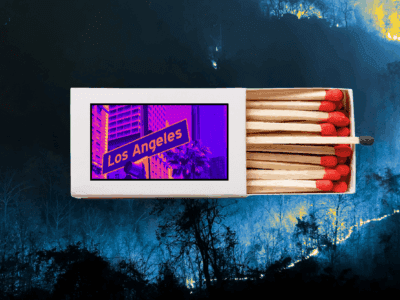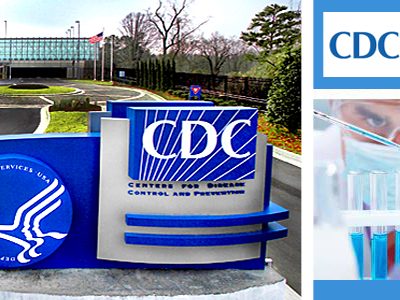Red, white, blue and smog
Fireworks leave behind a lot of pollutants

As a kid on the South Side of Chicago, summertime meant seeing White Sox games at Comiskey Park (technically now called U.S. Cellular Park, but I will never call it that). If the Sox won, there were fireworks. And on Saturdays, there were fireworks even if they didn’t. I have a distinct memory of asking my parents if the fireworks polluted the air, seeing the clouds of smoke floating above us afterward. They assured me that there weren’t enough fireworks to have any impact. Apparently, my nine-year-old self was right to worry.
Yesterday was July 4th, and most of us enjoyed a fireworks display, or perhaps even set off a few of our own (safely, I hope). Many of us in the environmental community might have also briefly wondered about the environmental impact of this tradition. Megan Herzog wrote a great Legal Planet piece detailing the environmental regulation of fireworks several years ago, but there have been a couple developments since then I thought I would add. According to a study published last year, average concentrations of particulate matter increase 42% across the country during peak fireworks hours (8 – 11 pm) on July 4th. The increase in pollutants at any particular site will depend on length of the display, the size of the fireworks, and local weather patterns, but air quality did return to normal levels by the next day. However, several sites, including major population centers like Chicago, experienced spikes in particulate matter that breached EPA’s threshold for safe levels. These jurisdictions will not face enforcement action from EPA, though, because July 4th fireworks falls under the Clean Air Act exemption for “exceptional events.”

The pollution is mainly caused by fine particles of metals that are used in fireworks to create colors. The chemistry is similar to how Victorian scientists identified a material by burning it and observing the color of the flame. These particulates can be dangerous for vulnerable groups, like the elderly and those with heart and lung conditions, and EPA recommends that people in those groups watch fireworks from upwind. The U.S. isn’t the only country with concerns about the health effects of national celebrations: both the U.K. and India have been studying the air quality effects of the similarly pyrotechnic-centered holidays of Guy Fawkes Day and Diwali. And the cumulative effects of non-July 4th fireworks, like those displayed after White Sox games, may be having a larger impact than we know.
Luckily for those of you not yet ready to give up the fun and beauty of fireworks, technology may have a solution. Scientists have begun finding “green” substitutes for some of the more harmful chemicals included in fireworks. Perhaps surprisingly, these studies are actually part of a broader effort within the U.S. Department of Defense to design more environmentally-friendly explosives. While that phrase does sound like an oxymoron, many traditional explosives not only physically destroy the land, but also leave behind a number of chemicals that are carcinogens or can cause neurological or reproductive problems. A possible side benefit would be new materials to make civilian explosives less toxic as well.
Although I doubt any of us will start boycotting our annual Fourth of July fireworks display, perhaps when those “green” fireworks do hit the market, we’ll at least be able to celebrate a little less guiltily. We might even transition to silent fireworks* one day – to the great relief of dogs everywhere.
*Thanks to fellow Legal Planet contributor Jonathan Zasloff for pointing out this article.
Reader Comments
3 Replies to “Red, white, blue and smog”
Comments are closed.







Antarctic Sea Ice Study Finds Expansion, Not Melting:
“……Antarctic sea ice study has found a continuing expansion of ice since 2000, not melting, reported the Washington Post, in a trend that baffles climate change supporters. Scientists don’t fully understand why Antarctic sea ice is growing, said the Post, but the study suggested the phenomenon results from natural variability in the climate system, in this case changes in the tropical Pacific Ocean that reverberate globally…..”
http://www.newsmax.com/TheWire/antarctic-sea-ice-study-expansion/2016/07/06/id/737236/
After Brexit, UN Climate Regime in Trouble:
“……In addition to the devastating blow dealt to globalism generally, the historic British “Brexit” vote to exit the European Union could have far-reaching implications for the United Nations “climate” regime. Concocted in Paris last year by the UN and its member governments, the controversial deal is unprecedented in terms of its full-blown promotion of regional governments, such as the EU, as crucial players in imposing the international agenda. But with Brexit, that gamble has turned against the globalists, and now they are scrambling to save face amid a victorious “leave” campaign led largely by climate skeptics and realists…….”
http://www.thenewamerican.com/tech/environment/item/23563-after-brexit-un-climate-regime-in-trouble
Science groups blasted for crossing line into activism with climate-change letter to Congress:
“…….Judith Curry, professor at the Georgia Institute of Technology School of Earth and Atmospheric Science, described the June 28 letter as a “blatant misuse of scientific authority to advocate for specific socioeconomic policies.” She added that the professional societies, led by the American Association for the Advancement of Science (AAAS), have “damaged public trust in science” by putting scientists on the same level as lobbyists…….”
http://www.washingtontimes.com/news/2016/jul/6/science-groups-blasted-crossing-line-activism-clim/